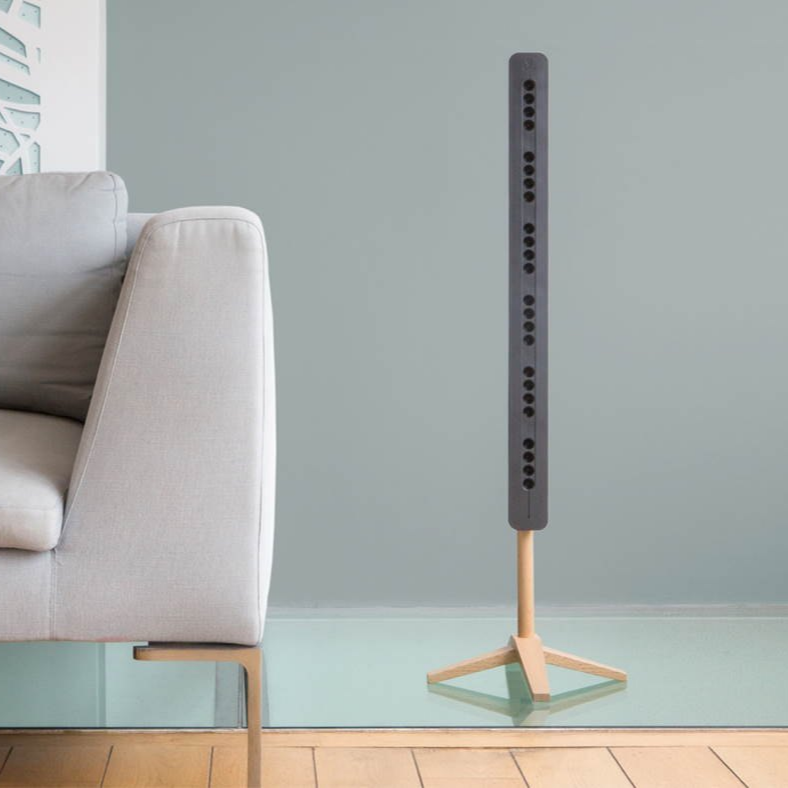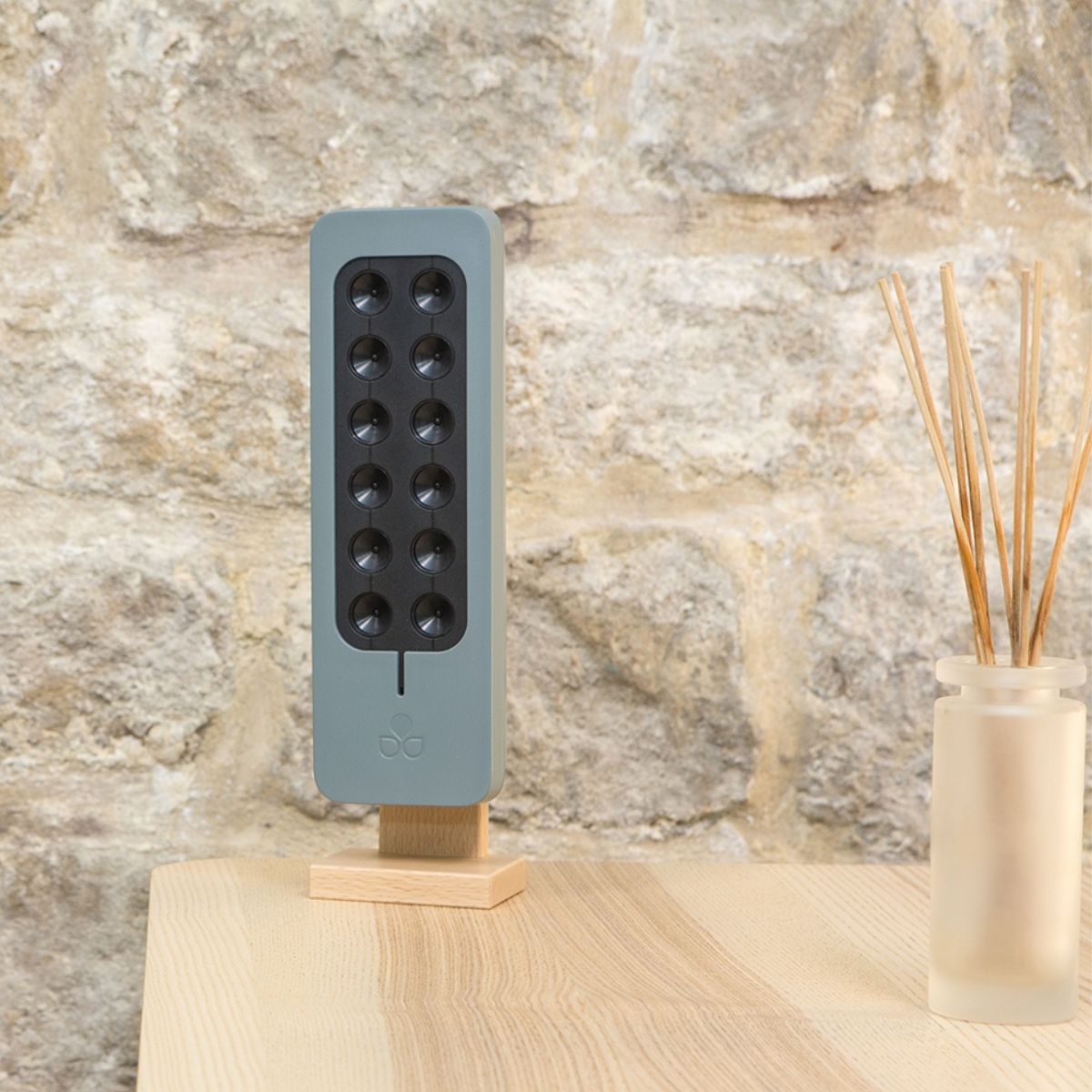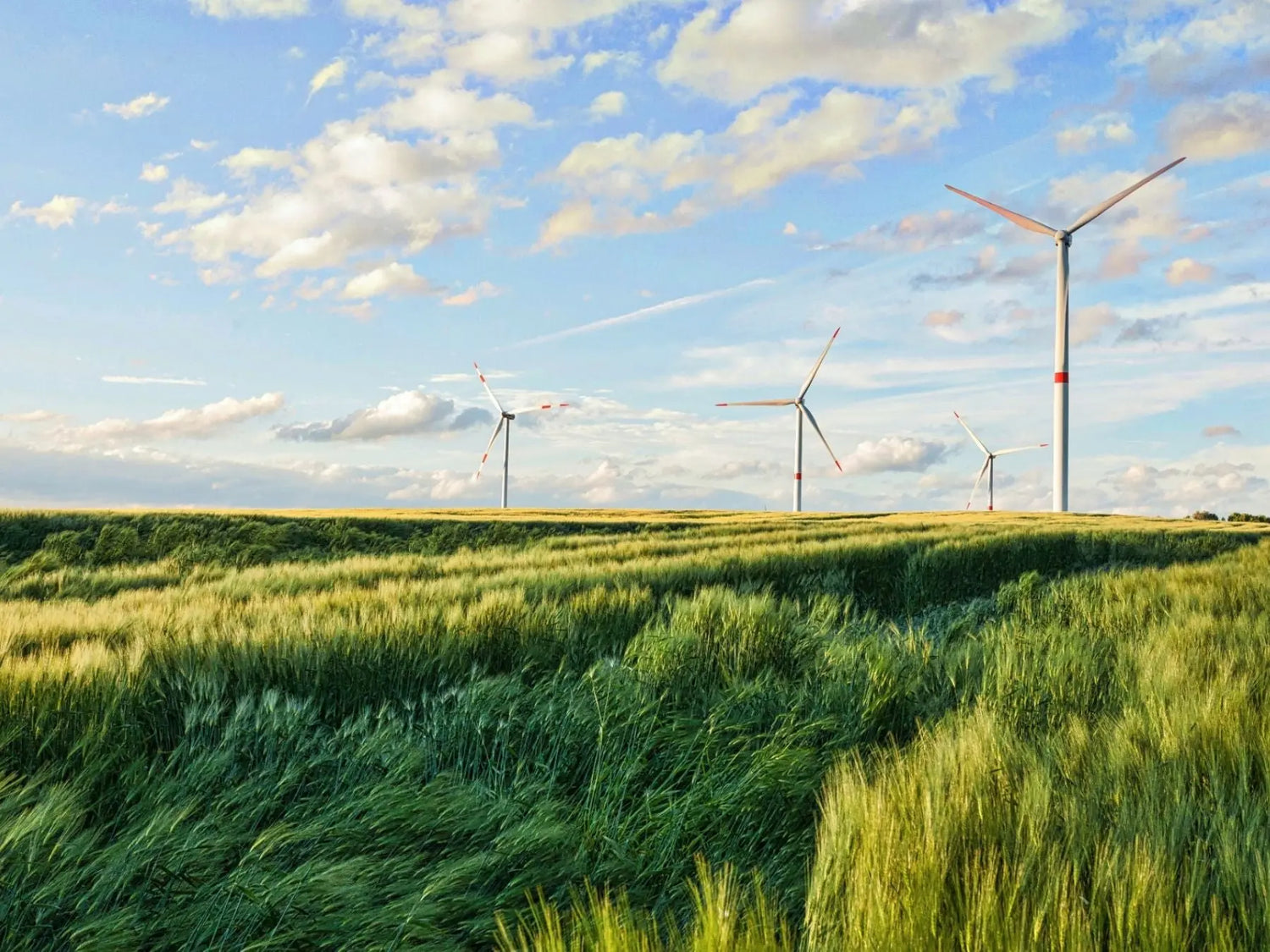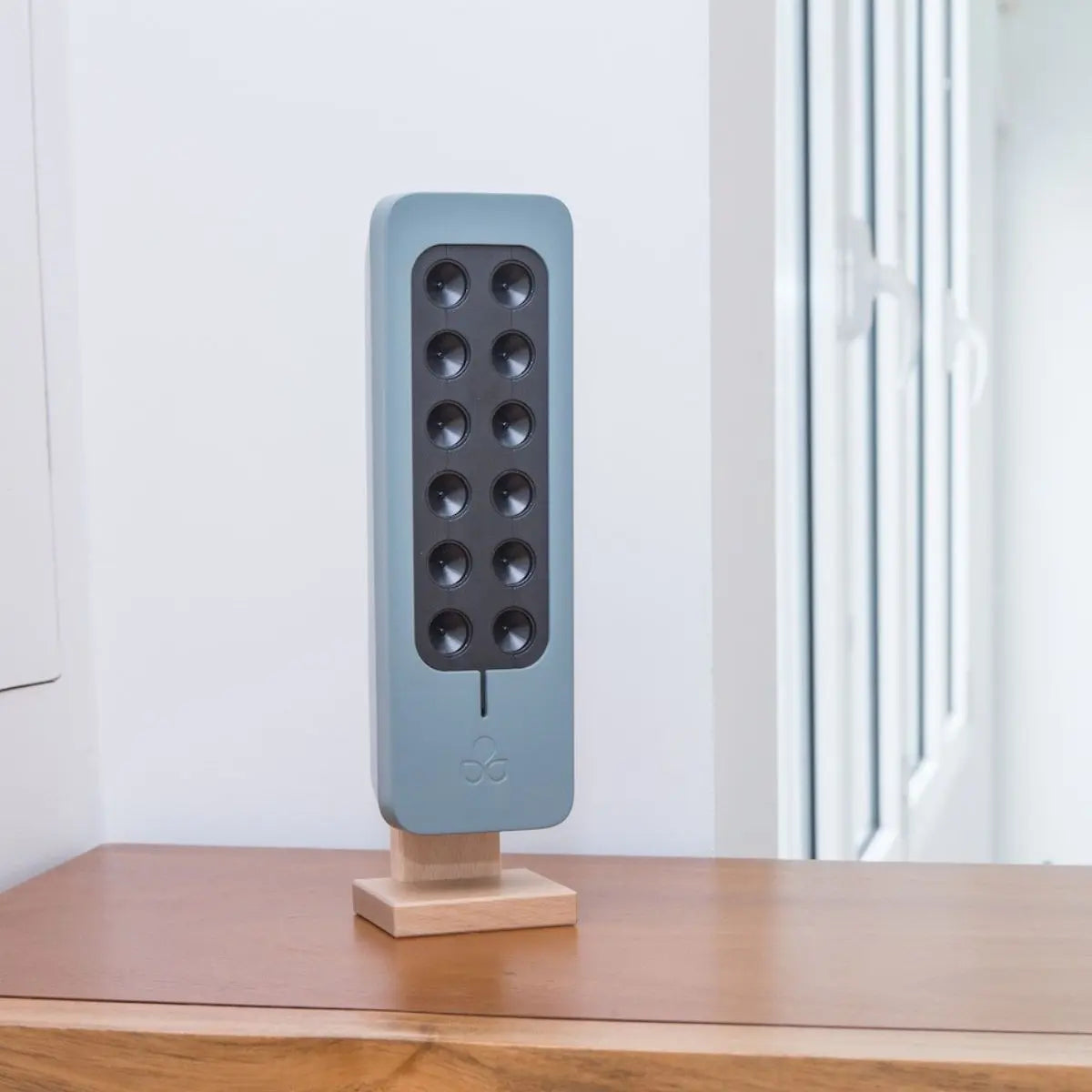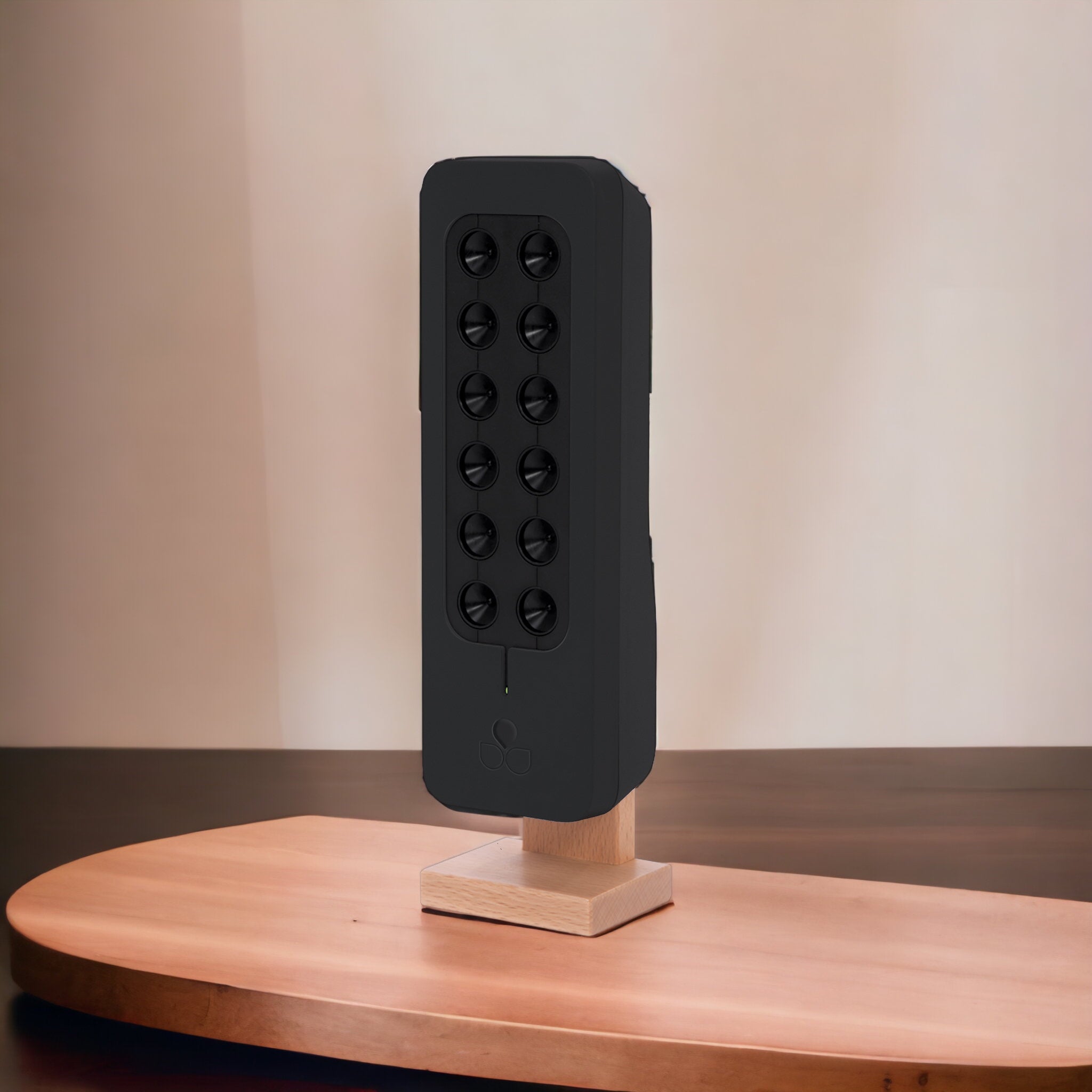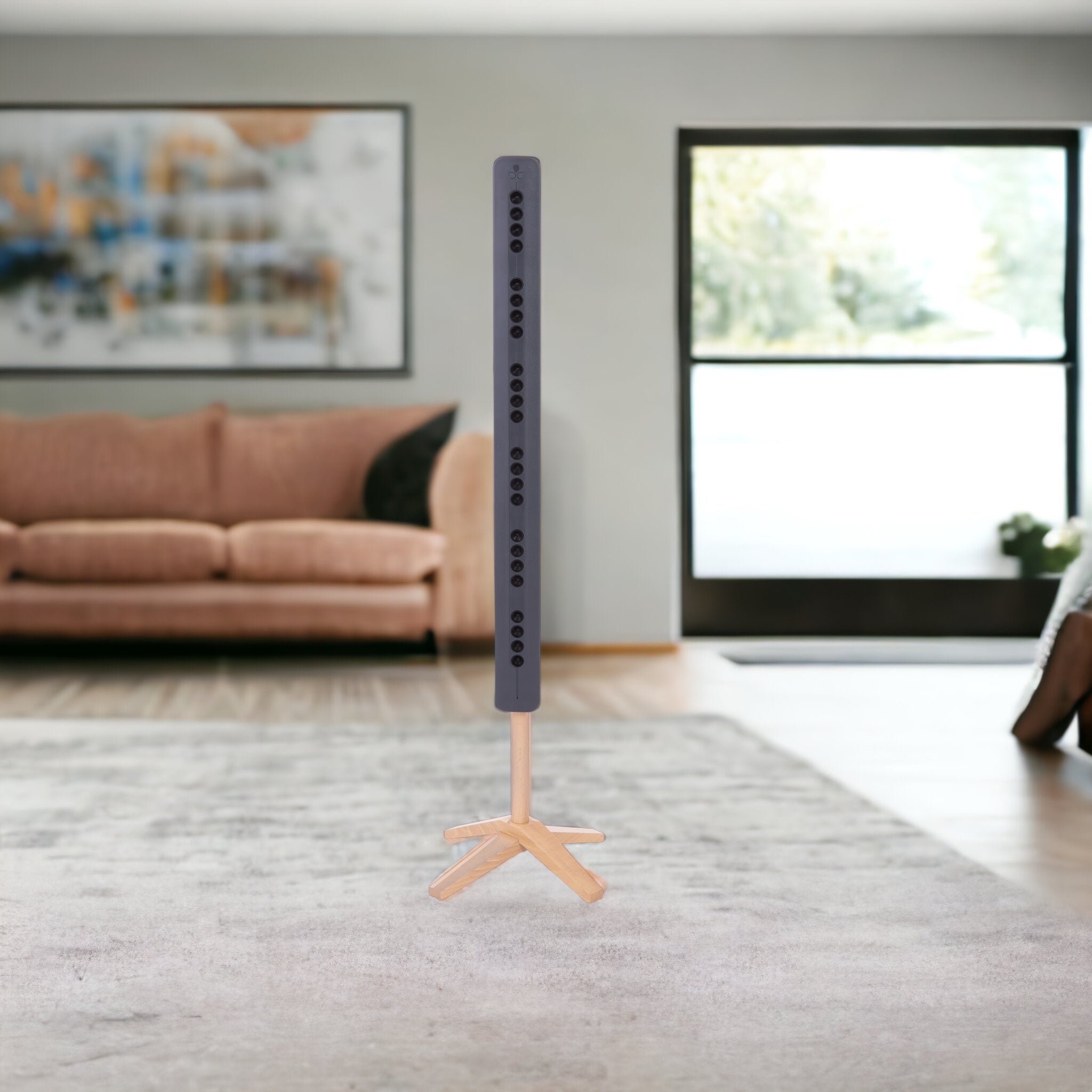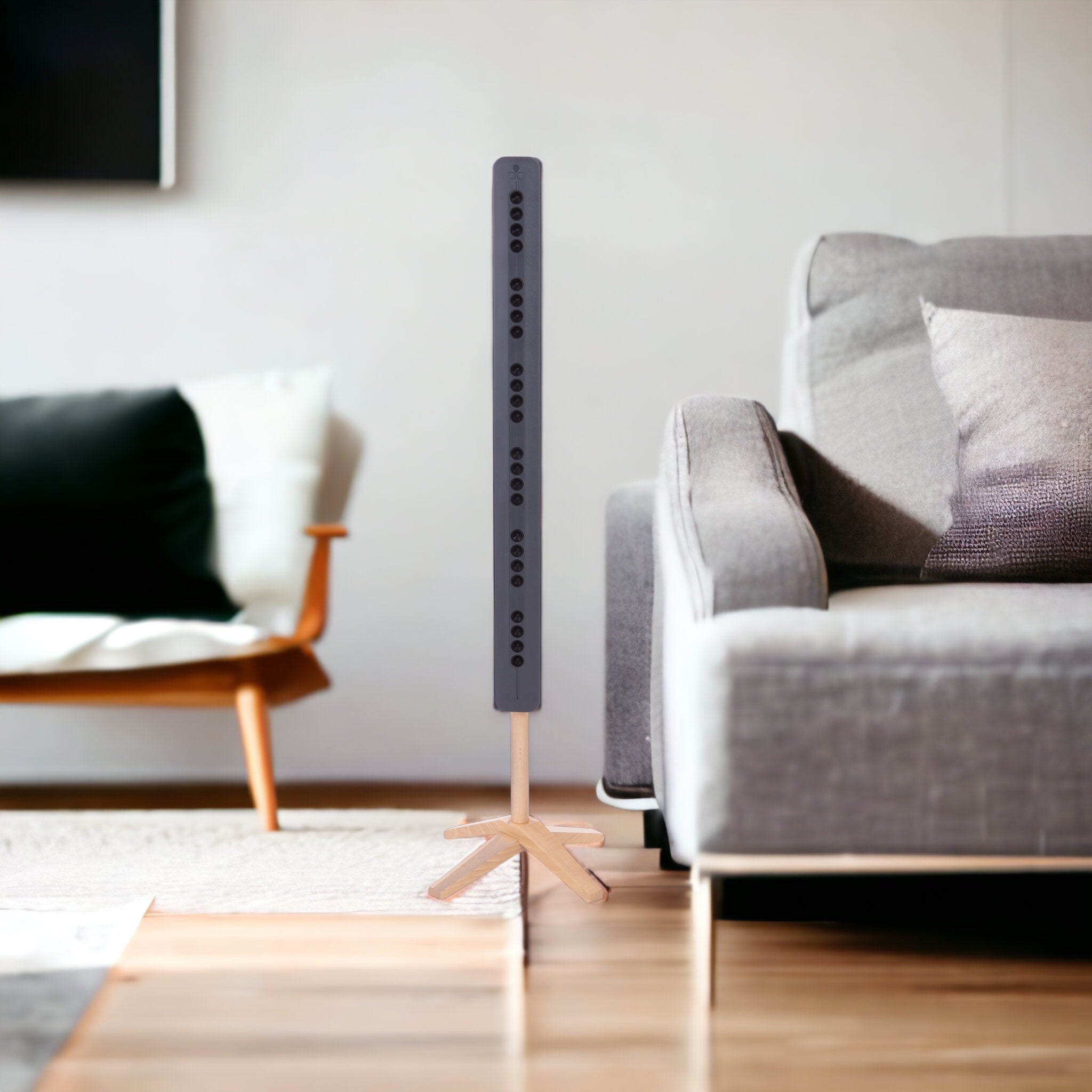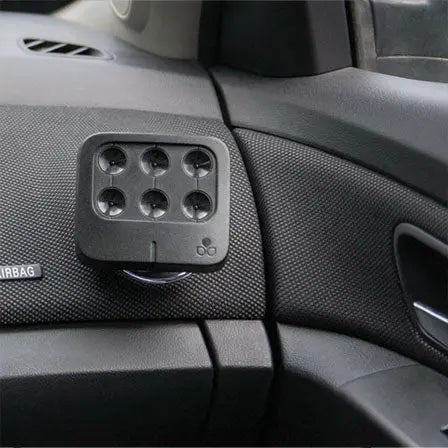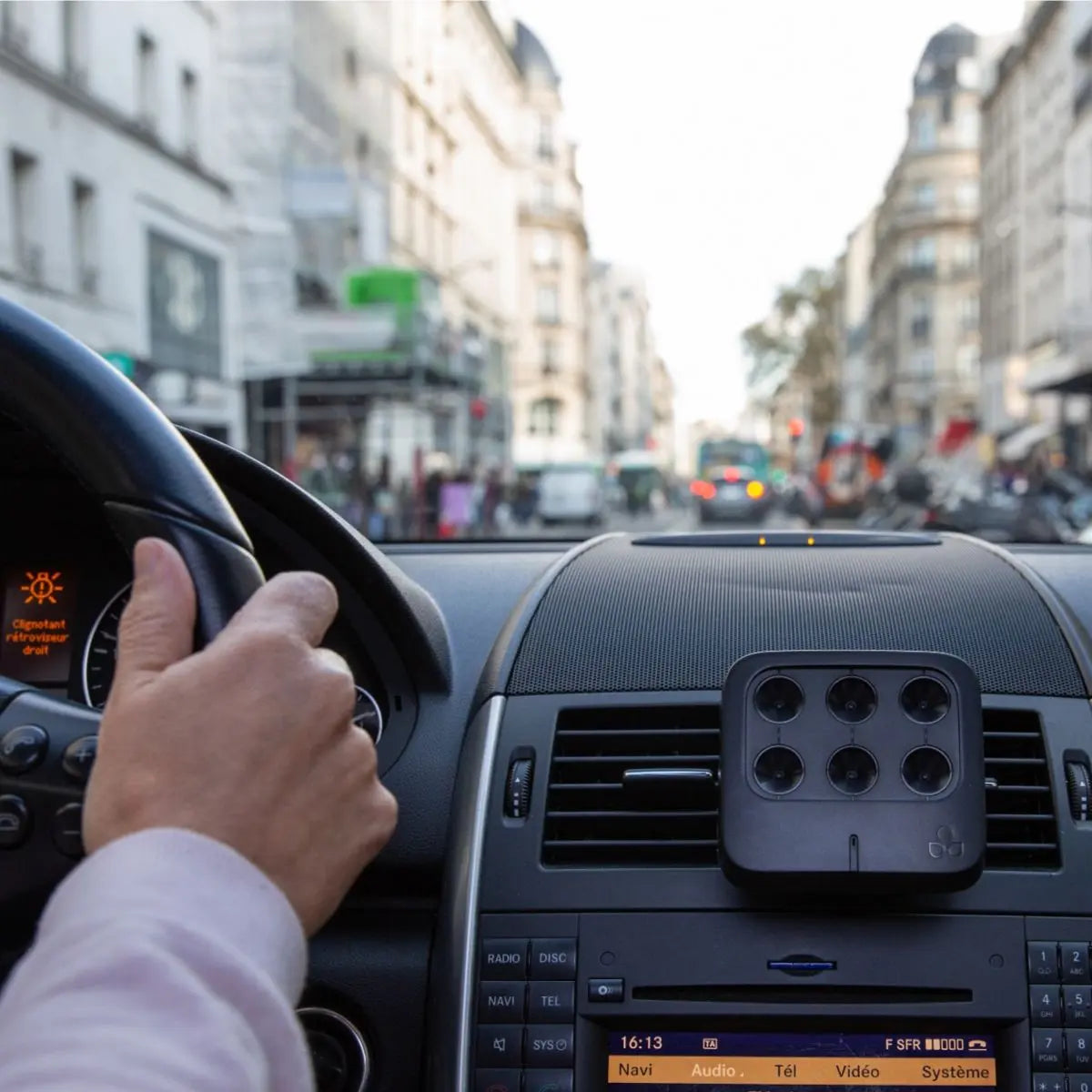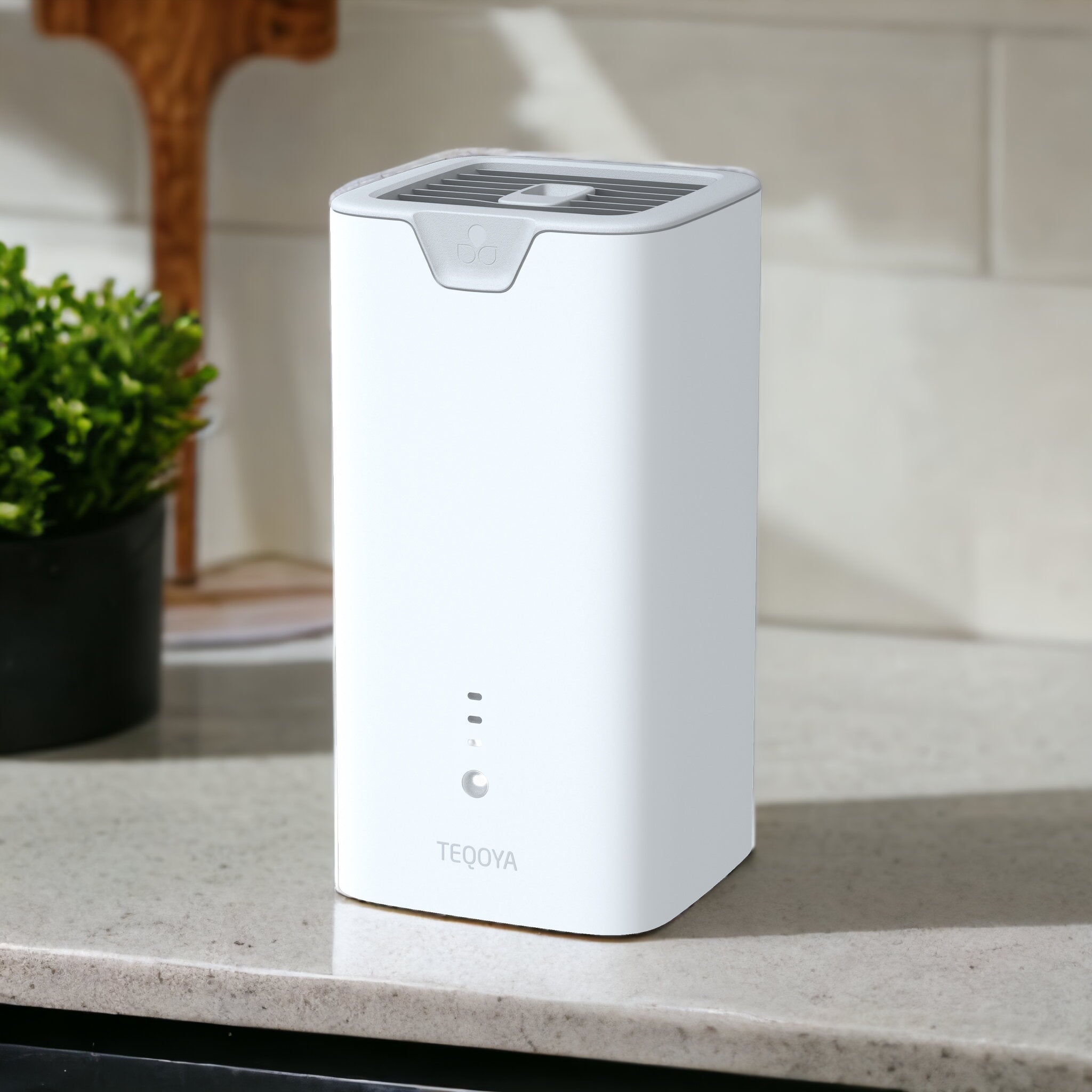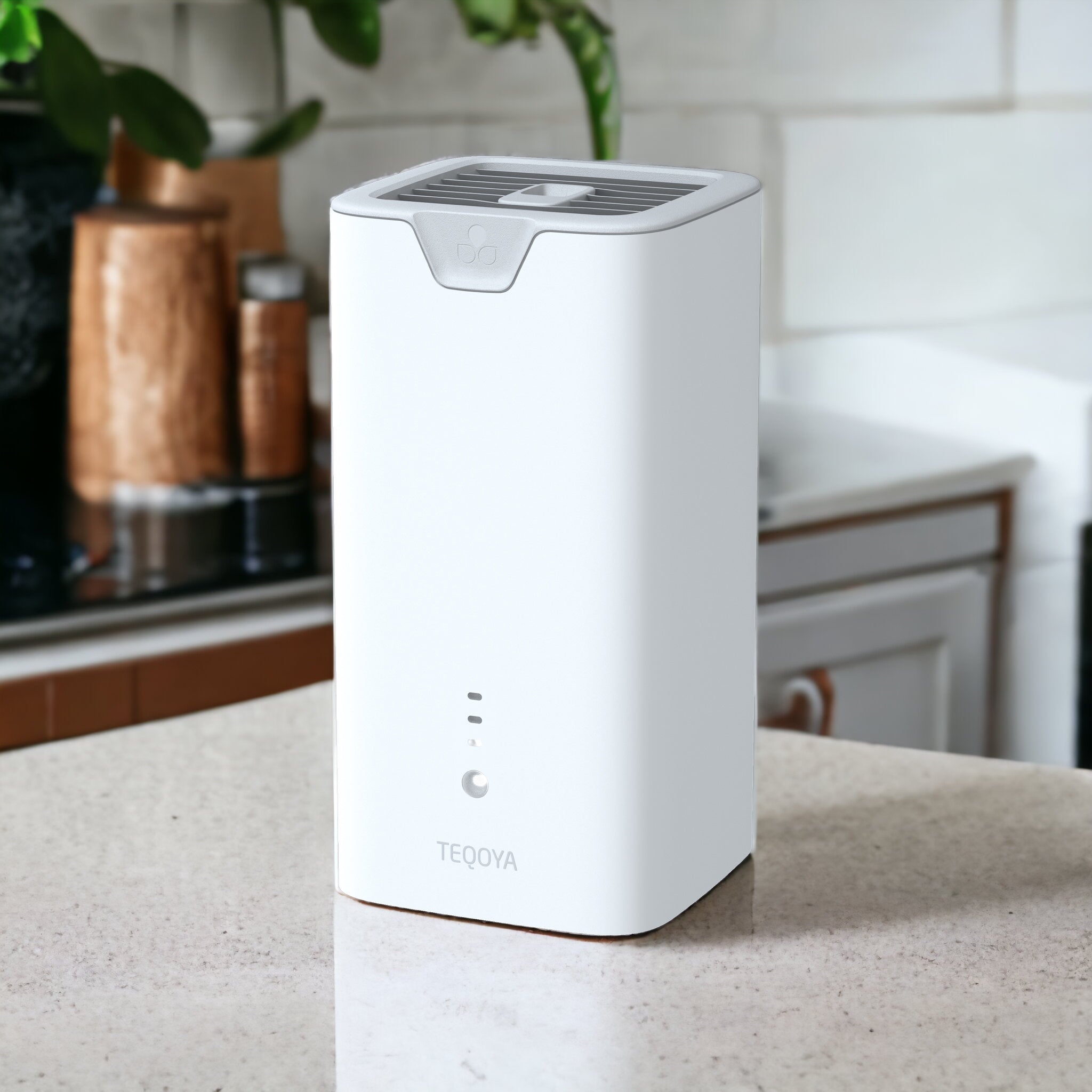Teqoya DESK and Teqoya HOME, what are the TEQOYA ionizers' ecological impacts?
Raw materials: reducing the carbon footprint
To calculate the carbon footprint of the Teqoya DESK and Teqoya HOME air ionizers, we first identified and listed each component of the devices. Using ADEME’s database, we calculated the CO 2 equivalent of each process. [2]
What calculation method was used to identify the carbon footprint of TEQOYA air purifiers?
To identify the major emitters of TEQOYA air purification solutions, we used ADEME's databases (Base CarboneⓇ et Base ImpactsⓇ) which provide the CO2 equivalent of many raw materials, manufacturing, and transportation processes. We have separately identified each component of our devices and modeled their geographical run to obtain the CO2 equivalent of each of these processes. Where information on manufacturing processes was not available, we estimated the average consumption used to produce the component and calculated the carbon footprint using the cost of electricity.
We added the impact of the assembly of each process to the emissions of the raw material acquisition, manufacturing, and transportation processes. Without resorting to a heavy lifespan analysis, often carried out on an ad hoc basis, we have developed our model with the objective of efficiency (to quickly identify the process that emits the most carbon) and scalability (to update the model with each evolution of our devices), while using the most objective and recognized quantitative information on carbon emissions possible.
Raw materials acquisition is the main emission factor of our air ionizers, with a share equivalent to 82% and 78% of the global impact of the two products (respectively Teqoya DESK and Teqoya HOME). Indeed, the materials and components of the two ionizers represent respectively respectivement 14 kgCO2eq and 19 kgCO2eq of emissions, mainly due to the electronic components. It’s hardly difficult to manufacture French electronic components with low carbon emissions. These components are essentially used in any electrical or electronic device: televisions, smartphones, air purifiers…
What is kgCO2eq ?
The “CO2eq” is a unit created by the GIEC (the French Intergovernmental Panel on Climate Change) to compare the impact of greenhouse gases on global warming. An emission equal to 1 kgCO2eq means that 1kg of this material has a global warming power once as high as 1kg of CO 2 over a period of 100 years. [3]
To illustrate here are the main CO2-emitting components in the Teqoya DESK and Teqoya HOME purifiers:
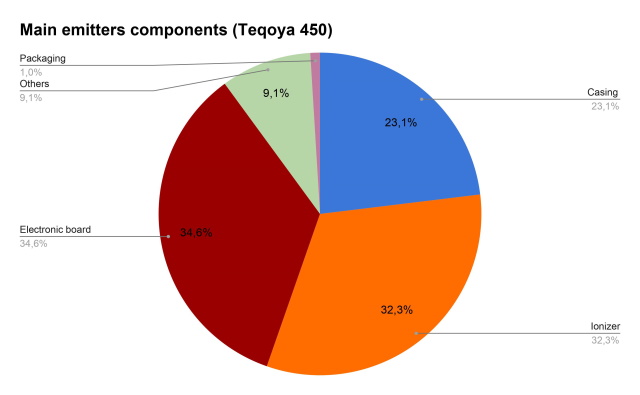
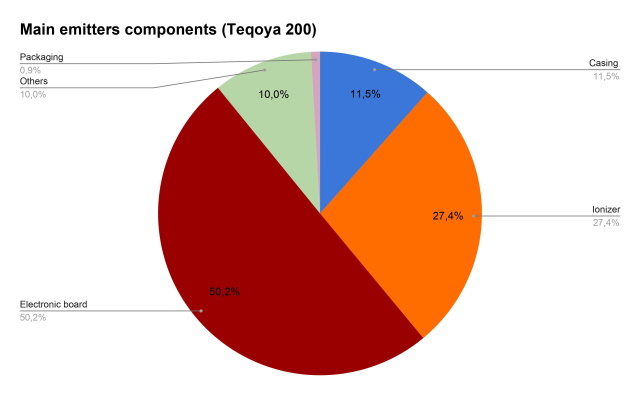
The share of emissions from the Teqoya HOME is more important than the Teqoya DESK due to the product's size. Because the Teqoya HOME is bigger, the amount of plastic used in its manufacture is also bigger, resulting in 3 times higher CO2 emissions. However, in close collaboration with our subcontractors, we search for ways to increase the share of recycled plastic. So this gap is bound to change 😉!
We also assure that our packaging is 100% recyclable: manufactured 100 meters from our factory, the carbon footprint of the packaging transport is zero. These elements explain the low emission of our devices’ packaging.
What is kgCO2eq ?
The “CO2eq” is a unit created by the GIEC (the French Intergovernmental Panel on Climate Change) to compare the impact of greenhouse gases on global warming. An emission equal to 1 kgCO2eq means that 1kg of this material has a global warming power once as high as 1kg of CO 2 over a period of 100 years. [3]

Manufacturing and assembly: the locally made is our top priority!
For the Teqoya DESK and Teqoya HOME ionizers, plastic injection is the main manufacturing process. Nevertheless, the location of our plants in France is very favorable for us because the French energy mix has low CO2 emissions. For instance, if our manufacturing and assembly plants were located in China, our devices' CO2 footprint would be 14 times bigger.
Our injection plant (located in Angers, France) runs on nuclear energy, which divides its carbon emissions by 9 compared to an average French energy mix and 128 compared to China! This shows clearly the ecological added value of having our plants in France.
As an example, here is the share of the different manufacturing processes of our air purifiers:
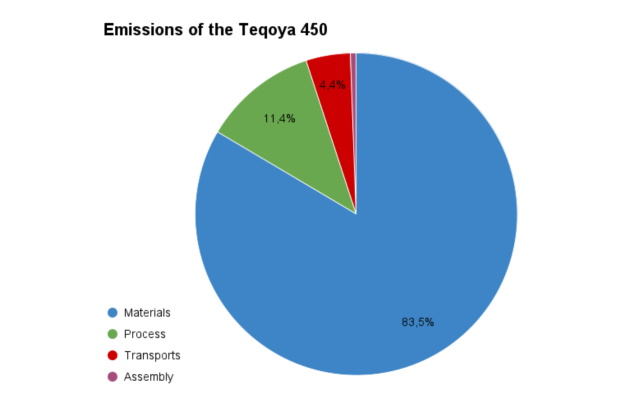
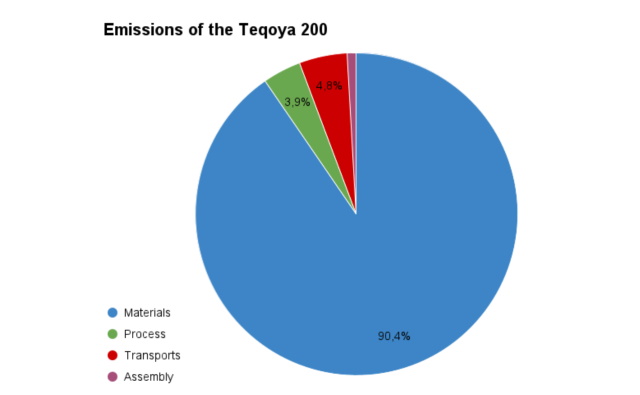
The share of emissions from manufacturing is more important for Teqoya HOME because the product is bigger and the plastic injection processes take longer. This stage is responsible for 2,4 kgCO2eq of the Teqoya HOME emissions and 0,6 kgCO2eq of the Teqoya DESK emissions.

Transport: proximity first and foremost!
Our plants are all located in Europe: in France and the Spanish Basque Country, less than 500 km from our assembly plant near Bordeaux (France). The electronic components transportation is then limited to France and Spain, minimizing the number of kilometers driven. We also assure our raw materials are locally made. To illustrate the wood used in the stands of our products is French oak from the forests of the Chôlet region.
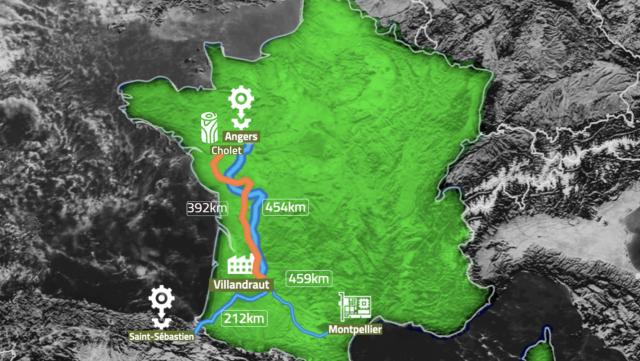
This proximity allows us to reduce carbon emissions due to transport, which only represent 13.6% for the Teqoya DESK and 10.1% for the Teqoya HOME global emissions, i.e. never more than 2.6 kgCO2eq, the equivalent in terms of carbon emissions of the manufacturing of 0.3 t-shirts. [4]
What about the Teqoya ROAD air ionizer and its environmental impact?
The small size of the Teqoya ROAD air purifier makes it exemplary from an environmental point of view. Its carbon footprint is only 6 kgCO2eq which is the equivalent of the manufacture of 1 t-shirt..
The majority of Teqoya ROAD emissions (77%) comes from raw materials, again due to electronic components that aren't manufactured in France.
The main CO2 emitting components of the Teqoya ROAD
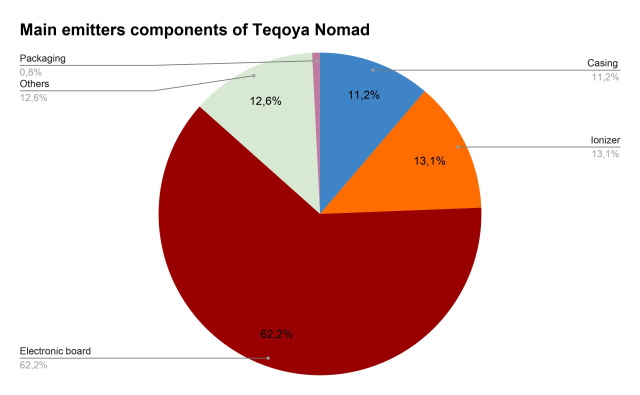
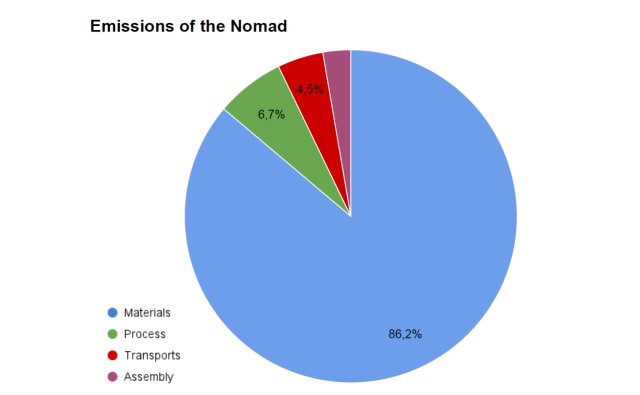
The manufacturing and assembly processes emit very little CO2 because the pieces are light and small: their design, therefore, requires little electricity consumption. As electricity is not a major CO2 emitter in France, their impact is minimized.
As for the transportation of the Teqoya ROAD components, the number of kilometers driven is once again reduced to a maximum. The transport emissions of the ROAD at 1 kgCO2eq only represent the manufacture of 0.2 of a t-shirt.

Getting a TEQOYA air purifier: an eco-citizen act for the planet
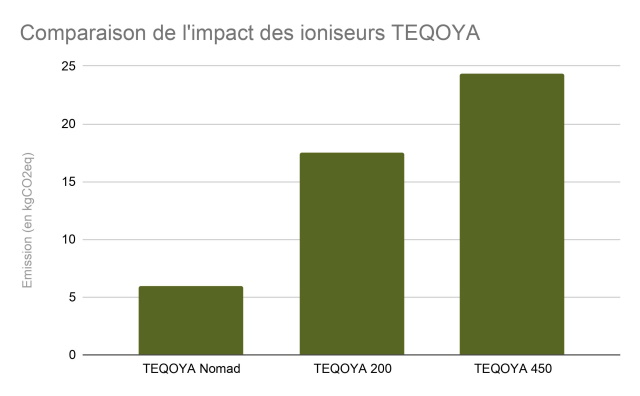
Thanks to our patented ionization technologies and the location of our resources and plants, the CO2 emissions of our air ionizers are truly reduced to keep our eco-friendly commitment. But we always want to do better! 😃 That's why we continue to work with our local subcontractor to obtain as much recycled and recyclable material as possible. And we are developing our research lab to use materials with an even smaller carbon footprint.
Find out more about our air ionizers here. And if you have any questions, contact us!

